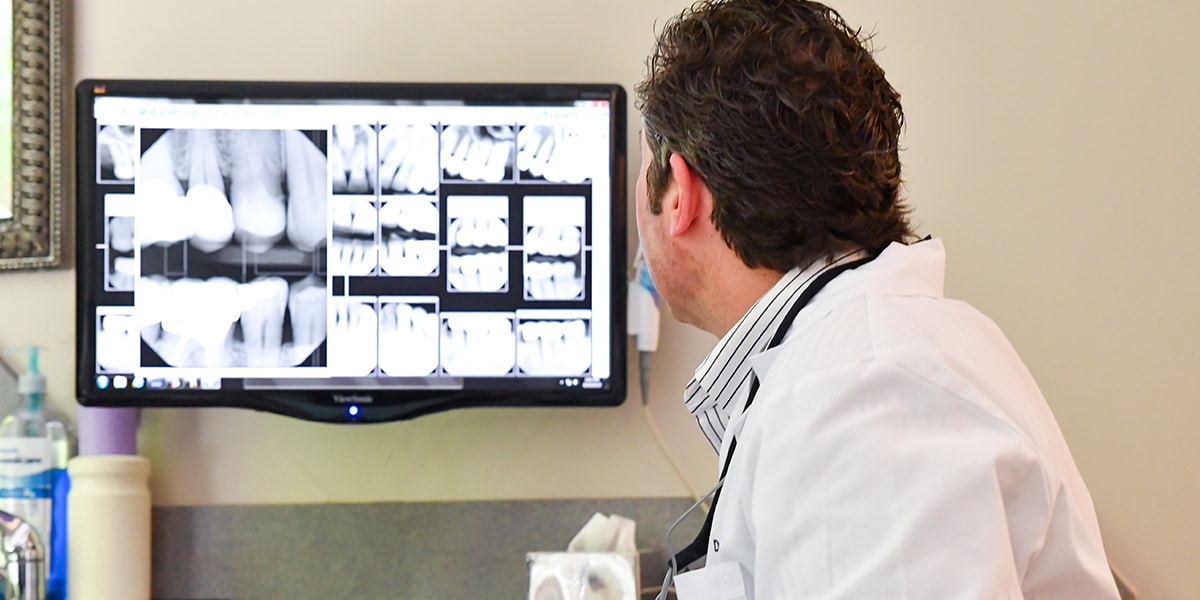Periodontal Procedures in Huntersville

The Smile Architects perform periodontal procedures in Huntersville, NC. Call us at 704-875-1621 to learn more and schedule a dental appointment.
Gums play a vital part in your oral health - and your body’s overall health, as well. Although gum disease is most often preventable, it’s very common. But with periodontal therapy, your dental team can treat gum disease before it becomes a more serious health problem.
While good dental hygiene at home is an extremely important part of maintaining healthy teeth and gums, even excellent hygiene, you cannot prevent bacteria and plaque. If the plaque is not removed, it can harden, and become calculus. We recommend having a periodontal maintenance program based on your needs, including both how quickly you develop calculus and your past and current periodontal health. During your maintenance visits, we’ll perform an oral examination as well as a dental cleaning.
Along with non-surgical periodontal therapy, we offer cosmetic periodontal surgery such as Crown Lengthening, Soft Tissue Grafts, and Bone Grafting. These procedures can enhance your smile, correcting problems like long or short teeth, an uneven gum line, receding gums, exposed roots, and indentations in the gums or jawbone.
Scaling and Root Planing

Mild and moderate gum disease can be treated with scaling and root planing. The treatment works by cleaning the plaque from the surface of the tooth’s root below the gums, denying bacteria a rough surface to adhere to.
During the scaling process, specialized dental instruments are used to remove dental plaque and calculus from beneath the gums. Planing is the procedure used to smooth the tooth’s root after the scaling process. Root planing helps the gums heal and reattach themselves to a cleaner and smoother root surface.
Periodontal Splinting
Periodontal splinting stabilizes teeth that have become loose as a result of bone loss caused by periodontal disease. The doctor determines if periodontal splints are needed - sometimes careful management of the periodontal disease causes the teeth to become more stable. If not, periodontal splints may use stabilizing wire or ribbon, composite resin, crowns, inlays/onlays, and/or veneers to stabilize your teeth.
Arestin®

ARESTIN® is a locally applied antibiotic delivering minocycline microspheres in the form of a powder. Placed directly into an infected periodontal pocket at the time of scaling and root planing procedures, it provides easy, targeted treatment. The microspheres adhere to the surrounding surfaces, offering a sustained release of the antibiotic at the site of active infection. This effective treatment is used in pocket depth reduction and may be used as part of a periodontal maintenance program.
Benefits of ARESTIN® include:
- No local anesthesia required
- No adhesive required
- No dressing required
- No need for removal - the microspheres are completely bioresorbed
- Remains active in the pocket for an extended period of time
Crown Lengthening

Crown lengthening is commonly used to expose more tooth structure. The lengthening procedure involves the removal of gum tissue and/or bone to expose more of a tooth’s structure.
Gum Grafting
Gum grafting treats root exposure caused by receded gum tissue. Tissue is removed from the roof of the mouth or from gum tissue near the tooth, and stitched into the area needing gingival repair.
Bone Grafting

Bone grafting replaces, reverses, or enhances the bone around teeth. When a tooth is lost, the surrounding bone collapses. The bone can be taken from other parts of the body or from synthetic material. Bone grafting allows proper support of dental implants or prostheses.
Osseous Surgery (aka Pocket Depth Reduction)
A pocket depth reduction is a surgical procedure used to smooth and reshape affected bone under the gum tissue. This procedure is performed when a pocket around a tooth or teeth does not respond to other types of treatment. It creates a shallow pocket that makes it difficult for bacteria to survive and damage bone, preventing bone loss and ultimately, tooth loss.
Bone Regeneration
Bone regeneration is a periodontal surgical procedure used to regenerate the jawbone and surrounding tissue. Often performed to protect your existing teeth and the tissues that keep them in place from bacterial plaque, this procedure involves folding back gingival tissue to remove the disease-causing bacteria. Membranes, bone grafts or tissue-stimulating proteins can be used to encourage your body’s natural ability to regenerate bone and tissue.
Ridge Preservation
Ridge preservation involves placing a regenerative bone grafting material into empty tooth sockets. The procedure rebuilds bone where an extraction has left an empty, weakened area, encouraging your body’s natural capacity to regenerate bone.
Frequently Asked Questions About Periodontal Procedures
How do you prevent gum disease from occurring?
Periodontal disease can be prevented through proper dental care, including thorough check-ups. You can help to prevent periodontal disease by seeing your dentist twice annually, flossing regularly, brushing your teeth twice a day, and using mouthwash. It’s helpful to limit the amount of sugar you consume, and avoid tobacco.
What causes gum disease?
Commonly, periodontal disease occurs because of poor dental hygiene, smoking, or a diet that contains excessive sugar. Family history, fluctuations in hormones including those caused by pregnancy, and chronic illnesses, as well as medication, can all cause the risk of periodontal disease.
How can gum grafting help with periodontitis?
When the gums have receded away from the teeth due to gum disease, gum grafting can replace lost gum tissue. Gum recession is usually the result of periodontal disease. Gum grafting can prevent any additional gum recession and subsequent damage to your surrounding teeth and bone structure.
Are you looking for a dentist in Huntersville, NC? Contact us today to schedule an appointment.
